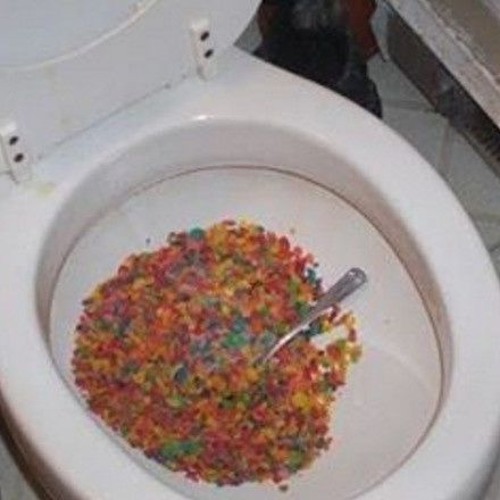Is it Permissible to Flush Food Down the Toilet?
Is it Permissible to Flush Food Down the Toilet?
Blog Article
The article author is making a few great points regarding Think Twice Before Flushing Food Down Your Toilet overall in this great article which follows.

Intro
Lots of people are often faced with the issue of what to do with food waste, particularly when it involves leftovers or scraps. One typical concern that occurs is whether it's alright to flush food down the commode. In this write-up, we'll explore the reasons why individuals may consider flushing food, the repercussions of doing so, and different methods for appropriate disposal.
Reasons why individuals may consider flushing food
Lack of awareness
Some individuals may not be aware of the possible harm triggered by purging food down the toilet. They might erroneously believe that it's a safe practice.
Convenience
Purging food down the toilet may seem like a quick and easy option to throwing away undesirable scraps, specifically when there's no neighboring trash can available.
Negligence
In some cases, individuals may merely pick to flush food out of sheer laziness, without considering the repercussions of their activities.
Consequences of flushing food down the toilet
Ecological effect
Food waste that winds up in waterways can contribute to pollution and damage marine communities. Additionally, the water utilized to purge food can strain water resources.
Pipes concerns
Flushing food can cause clogged pipelines and drains pipes, creating pricey pipes repairs and hassles.
Types of food that ought to not be flushed
Coarse foods
Foods with fibrous appearances such as celery or corn husks can obtain tangled in pipelines and trigger blockages.
Starchy foods
Starchy foods like pasta and rice can absorb water and swell, bring about obstructions in pipelines.
Oils and fats
Greasy foods like bacon or cooking oils should never be purged down the toilet as they can strengthen and create clogs.
Appropriate disposal approaches for food waste
Utilizing a waste disposal unit
For homes equipped with waste disposal unit, food scraps can be ground up and flushed through the pipes system. However, not all foods appropriate for disposal in this fashion.
Recycling
Specific food product packaging materials can be recycled, reducing waste and reducing environmental effect.
Composting
Composting is a green means to throw away food waste. Organic products can be composted and utilized to enrich soil for gardening.
The relevance of correct waste management
Reducing ecological injury
Proper waste management methods, such as composting and recycling, help lessen pollution and maintain natural resources for future generations.
Protecting plumbing systems
By staying clear of the method of flushing food down the toilet, home owners can prevent pricey plumbing fixings and maintain the honesty of their pipes systems.
Verdict
To conclude, while it might be tempting to flush food down the commode for benefit, it's important to recognize the potential consequences of this activity. By embracing appropriate waste administration practices and throwing away food waste responsibly, individuals can contribute to much healthier pipes systems and a cleaner environment for all.
FLUSH FOOD DOWN THE TOILET?
FLUSHING FOOD CAN CAUSE BLOCKED DRAINS IN YOUR HOME
All of the plumbing fixtures in your home are connected to the same sewer pipe outside of your home. This outdoor sewer pipe is responsible for transporting all the wastewater from your home to the Council sewer mains. Even small pieces of food that go down the kitchen sink can cause problems for your sewer. It should therefore be obvious that flushing larger bits of food, such as meat, risks a clog in either the toilet itself or the sewer pipes. Flushing greasy food is even more problematic because oil coagulates when it cools, coating the interior lining of your pipes.
THE TOILET IS NOT A BIN
Food isn’t the only thing that people shouldn’t be flushing down the toilet. People use the toilet to dispose of all kinds of things such as tampons, makeup wipes, dental floss, kitty litter and even underwear. Water goes to great lengths to educate residents about the high costs and stress placed on wastewater treatment systems simply from people flushing the wrong stuff down the toilet. It costs taxpayers millions of dollars each year, and homeowners thousands in blocked drain repairs.
FLUSHING FOOD IS A WASTE OF WATER
Flushing food is a waste of our most precious resource - water. In June this year Level 1 water restrictions were introduced to protect water supply from drought conditions. Much of New South Wales continues to be affected by prolonged drought with recent figures revealing up to 97 per cent of the state remains in drought. Depending on whether you have a single or dual flush toilet, every single flush uses between five and 11 litres of water. In the current climate this is a huge amount of water to be wasting on flushing food that should be placed in the bin (or better yet, the compost).
https://www.jabplumbingsolutions.com.au/blog/can-you-flush-food-down-the-toilet

We had been guided to that write-up about Flushing Food Down the Toilet? from a friend on our other web page. Liked our write-up? Please share it. Let someone else locate it. We recognize the value of reading our article about .
Request A Quote Report this page